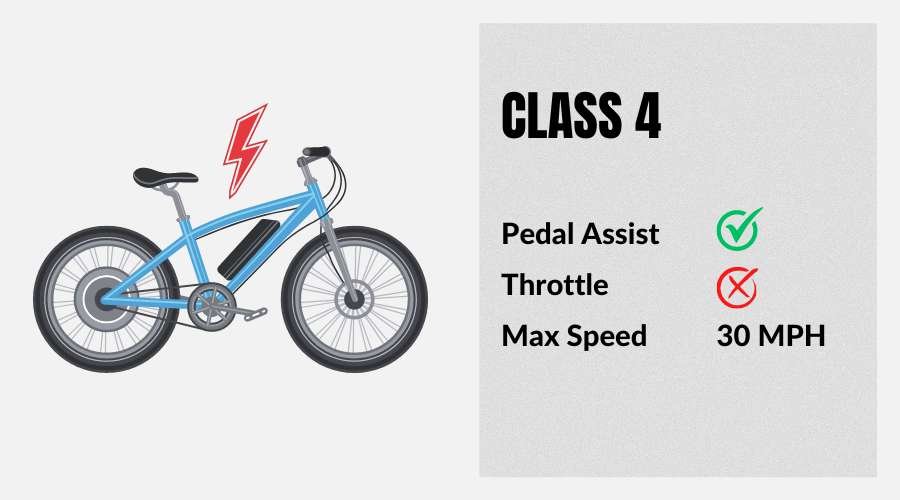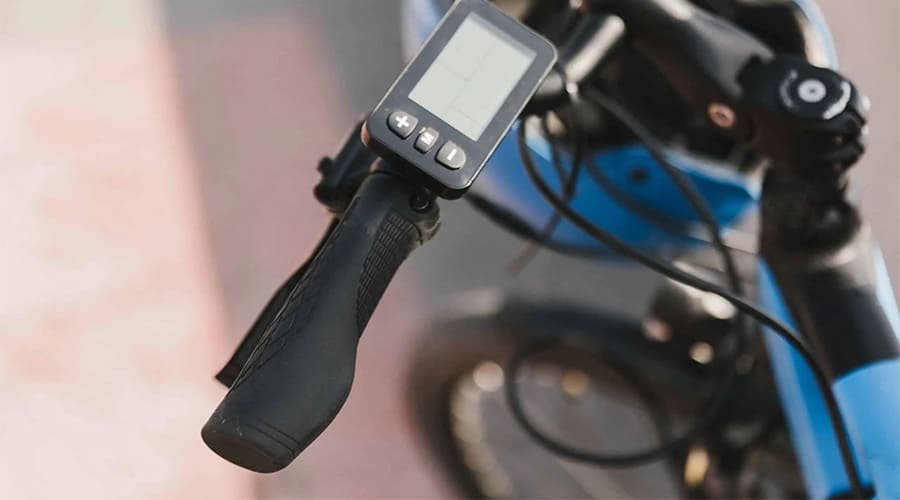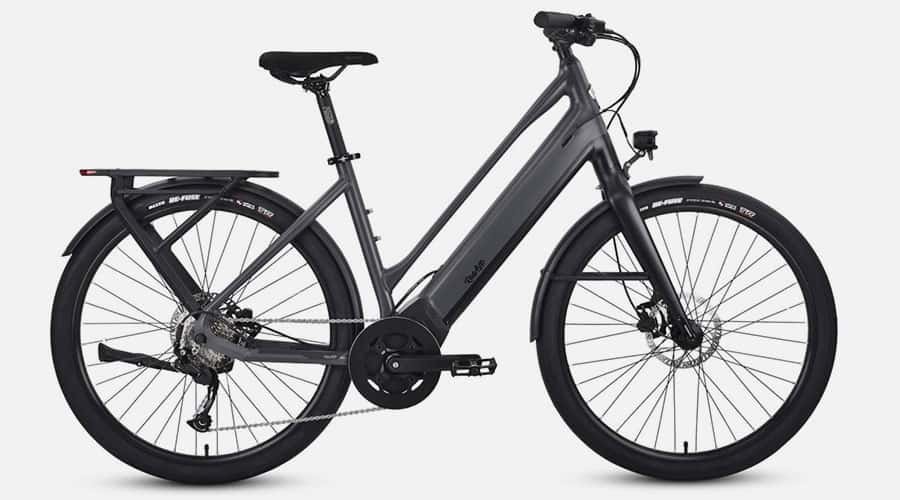Are you considering buying an electric bike but feeling overwhelmed by the number of options available? Electric bikes come in various classes, each with its own unique features and benefits. Understanding the different classes of electric bikes can help you choose the perfect ride for your needs.
In this article, we’ll take a closer look at all electric bike classes, explaining what sets them apart, and how they can be used. By the end of this article, you’ll have a better understanding of the different e-bike classes, and be better equipped to make an informed decision about which Class is right for you.
What Are the 3 Classes of E-bikes?

Based on the level of motor assistance and top speed, electric bikes are divided into three classes: Class 1, 2, and 3. These classes were introduced by PeopleForBikes in order to standardize e-bike regulations in the United States.
What is a Class 1 E-bike?
Class 1 e-bikes are electric bikes that provide pedal assist only, with a maximum assisted speed of 20 miles per hour (32 kilometers per hour). These electric bikes do not come with a throttle and provide assistance only when the rider is pedaling.
What is a Class 2 E-bike?
Class 2 e-bikes are those electric bikes that come with both a throttle and pedal assist. The throttle can be used to activate the motor without pedaling. These e-bikes provide the rider with a maximum assisted speed of 20 miles per hour (32 kilometers per hour).
What is a Class 3 E-bike?
Class 3 e-bikes, just like Class 1, provide pedal assist only. However, they have a maximum assisted speed of 28 miles per hour (45 kilometers per hour) which is much greater than the 20 mph provided by Class 1 and Class 2 e-bikes. This superior speed makes them a great option for riders who want to travel faster.
What is the Difference Between Class 1, 2, and 3 E-bikes?
The following are some of the main differences between Class 1, 2, and 3 e-bikes:
Class 1 and Class 3 electric bikes are pedal-assist only, meaning that the motor only provides assistance when the rider is pedaling. On the contrary, Class 2 electric bikes can be ridden without pedaling as, in addition to pedal assist, they also come with a throttle.
The maximum assisted speed is also a distinguishing factor between Class 1, 2, and 3 e-bikes. Class 3 electric bikes, when compared to Class 1 and Class 2, are much faster. They provide motor assistance all the way up to 28 miles per hour, whereas Class 1 and Class 2 electric bikes have a maximum motor-assisted speed of 20 miles per hour.
Another difference between Class 1, 2, and 3 electric bikes is their pricing. Class 3 electric bikes are mostly more expensive than Class 1 and Class 2 e-bikes, with Class 1 typically costing the least. So if you’re on a tight budget, you might want to consider a Class 1 e-bike.
The Class of e-bike also determines where the bike can be ridden. Class 1 and Class 2 electric bikes are mostly allowed on all bike paths and trails made for traditional bicycles. However, due to the higher speed of Class 3 electric bikes, they may be restricted in some areas or prohibited on some trails.
What is a Class 4 E-bike?

Currently, there is no official Class 4 e-bike classification. However, some manufacturers and retailers use the term “Class 4” to describe electric bikes that exceed the maximum assisted speed of Class 3 e-bikes (28 miles per hour) or have a higher wattage motor than the 750-watt limit for Class 3 electric bikes.
These e-bikes are often marketed as “off-road” or “performance” electric bikes. This is because they are designed for use on rough terrain and off-road trails. Additionally, they may be designed with features such as larger tires, full suspension, and more durable components to withstand the rigors of off-road riding.
How Fast Does a Class 4 E-bike Go?
As previously mentioned, Class 4 e-bikes are not officially classified. Therefore, the speed of a Class 4 e-bike may vary from one model to another. In most cases, these e-bikes provide motor assistance to the rider at speeds much greater than the maximum assisted speed of Class 3 e-bikes (28 miles per hour).
However, the maximum speed that an electric bike can attain depends on various factors, including the motor wattage, the size and type of the battery, the rider’s weight, and the terrain. Some high-performance Class 4 electric bikes may offer a maximum assisted speed of 40 miles per hour or more.
It’s important to note that e-bike regulations vary by state and city, and the use of e-bikes that exceed the maximum assisted speed or motor wattage may be prohibited or restricted in some areas. Additionally, e-bikes with higher maximum assisted speeds or motor wattage may require registration, licensing, or insurance in some areas.
Which is Better: Class 1, 2, or 3 E-bike?

The answer to this question depends on the needs and preferences of the rider. All three classes of electric bikes (class 1, 2, and 3) come with their own pros and cons.
Class 1 e-bikes are ideal for riders who want a more natural riding experience and prefer to do most of the work themselves, using motor assistance only when needed. They are also allowed on most trails and bike paths and do not require licensing or registration in most areas. However, the maximum assisted speed of 20 miles per hour may be limiting for some riders.
Class 2 e-bikes offer the convenience of a throttle and the flexibility to choose when to use motor assistance. They are ideal for riders who want to conserve their energy or need extra assistance on steep hills. However, just like Class 1, they offer assistance up to 20 miles per hour only and therefore if speed is your main requirement, Class 2 e-bikes may not be for you.
Class 3 electric bikes offer the highest level of motor assistance with a maximum assisted speed of 28 miles per hour. They are ideal for riders who want to go faster and cover more distance with less effort. However, they are generally more expensive than Class 1 and 2 e-bikes. Additionally, due to the higher speed, they may be restricted in some areas so it is important that before buying you do your research.
Is a Class 1 E-bike Fast Enough?
The answer to this question depends on several factors. If you plan on using your e-bike for commuting, a Class 1 e-bike may be more than enough. It can easily keep up with traffic in most urban areas and can be a faster alternative to driving in congested areas.
On the other hand, if you’re looking for a more adrenaline-fueled ride or planning on using an e-bike for racing or off-road adventures, a Class 1 e-bike may not be fast enough for you. In those cases, you may want to consider a Class 3 e-bike or a high-powered e-bike, which can reach speeds of up to 28 mph (45 kph) or more.
In conclusion, a Class 1 e-bike can be fast enough for most people’s needs, especially if you’re using it for commuting. However, if you’re looking for a more high-speed ride, you may want to consider a different type of e-bike. Ultimately, the answer comes down to personal preference and intended use.
Can a Throttle Be Added to a Class 1 E-bike?

In most cases, a throttle can be added to a Class 1 electric bike, but it will no longer be considered a Class 1 e-bike. By adding a throttle, the e-bike will be considered a Class 2 e-bike, which are electric bikes that have a maximum assisted speed of 20 mph and come with both a throttle and pedal assist.
It’s worth noting that in some areas, Class 2 e-bikes are subject to different regulations than Class 1 e-bikes. For example, they may not be allowed on certain bike paths or may require registration or licensing. So, before adding a throttle to a Class 1 e-bike, it’s important to check the local regulations to ensure compliance.
Another consideration is the impact that a throttle can have on the range of the e-bike. Since a throttle allows the rider to use electric power without pedaling, it can drain the battery quicker than using pedal assist alone. As a result, e-bikes with a throttle may have a shorter range than e-bikes with only pedal assist.
Before adding a throttle, it’s important to research the regulations in your area and consider how it may affect the range of the e-bike. Additionally, you may also need to update the e-bike’s firmware or controller to accommodate the new throttle.
Can You Pedal a Class 2 E-bike?
A Class 2 electric bike can mostly be pedaled just like any other bike. Pedal-assist on a Class 2 e-bike is similar to a Class 1 e-bike, except that it also has a throttle option. This means that riders can choose to use the throttle alone, the pedal assist alone, or a combination of both.
The level of assistance provided by the motor can be adjusted, allowing the rider to choose the amount of effort required to pedal.
Pedaling a Class 2 e-bike, rather than solely relying on the motor, has several benefits as well. For example, pedaling can help extend the range of the e-bike by reducing the strain on the battery. Pedaling can also provide a more natural and intuitive riding experience, which many riders prefer.
Are Class 3 E-bikes Worth It?

Class 3 e-bikes are a popular choice for riders who want a fast and efficient way to commute or explore their surroundings. They are designed to provide electric assistance up to speeds of 28 mph (45 kph), which exceeds the maximum speed of Class 1 and Class 2 e-bikes. But are Class 3 e-bikes worth the investment? Here are some factors to consider.
Speed
One of the main advantages of a Class 3 e-bike is its speed. With a top speed of 28 mph, riders can cover more distance in less time, which can be beneficial for commuting or exploring. However, it’s important to note that the higher speed may also require additional safety measures, such as wearing a helmet and following local regulations.
Cost
Class 3 e-bikes can be more expensive than Class 1 and Class 2 e-bikes due to their higher speed and more powerful motor. Before investing in a Class 3 e-bike, it’s important to consider your budget and how much you are willing to spend.
Regulations
Class 3 e-bikes are subject to different regulations in different areas. For example, they may be limited to certain bike lanes or require additional safety equipment such as turn signals or mirrors. Therefore it is important that you go through the laws in your area before making a decision.
In conclusion, whether or not a Class 3 e-bike is worth it depends on your individual needs and preferences. If you want a faster and more efficient way to commute or explore, and have the budget to invest in a more powerful e-bike, a Class 3 e-bike can be a great option. However, it’s important to consider the regulations in your area before making a decision.
Do You Need a Helmet for a Class 3 E-bike?
The answer varies depending on where you live. In the United States, for example, federal law does not require a helmet for Class 3 e-bikes, but some states and cities have their own regulations. For instance, California law requires those riding a Class 3 e-bike to wear a helmet, whereas in Arizona there is no helmet-requirement law at all.
In other countries, the rules may be different. In Canada, for example, all cyclists are required to wear a helmet by law, regardless of the type of bike. In Europe, the rules vary by country, but in general, helmets are not required for e-bikes that do not exceed 15.5 miles per hour.
Regardless of the laws in your area, it is always a good idea to wear a helmet when riding a Class 3 e-bike. These bikes are faster and more powerful than traditional bicycles, and the risk of injury in an accident is greater. Wearing a helmet can help protect your head in the event of a crash or fall, and can potentially save your life.
When choosing a helmet for your Class 3 e-bike, it’s important to look for one that meets safety standards set by organizations such as the Consumer Product Safety Commission (CPSC) in the United States, or the European Committee for Standardization (CEN) in Europe. These standards ensure that the helmet has passed rigorous safety tests and will provide adequate protection in the event of a crash.
FAQs
How are the different classes of e-bikes regulated?
The different classes of e-bikes are regulated by federal and state laws, which specify the maximum speed and power output of the electric motor.
Do I need a license to ride a Class 1 or Class 2 e-bike?
Typically you do not need a license to ride a Class 1 or Class 2 e-bike, as long as you follow the regulations and restrictions set by your state or local government.
How do I choose the right Class of e-bike for me?
Consider your needs and preferences, such as the terrain you will be riding on, the distance you need to travel, and the level of physical effort you want to exert. Consult with a knowledgeable e-bike dealer or professional to help you choose the right Class and model for you.
Do I need a license to ride a Class 3 electric bike?
This depends on your local laws and regulations. In some places, a driver’s license or special permit may be required to ride a Class 3 e-bike.
Which Class of electric bike is best for commuting?
This depends on your personal preferences and needs. A Class 1 e-bike may be more suitable for those who prefer to pedal, while a Class 2 e-bike may be better for those who need extra help with hills or headwinds. A Class 3 e-bike may be best for those with longer commutes or those who want to travel faster.
Are electric bikes legal in my area?
This depends on your local laws and regulations. It is important to research your local laws and ensure that you comply with them when using an electric bike.

